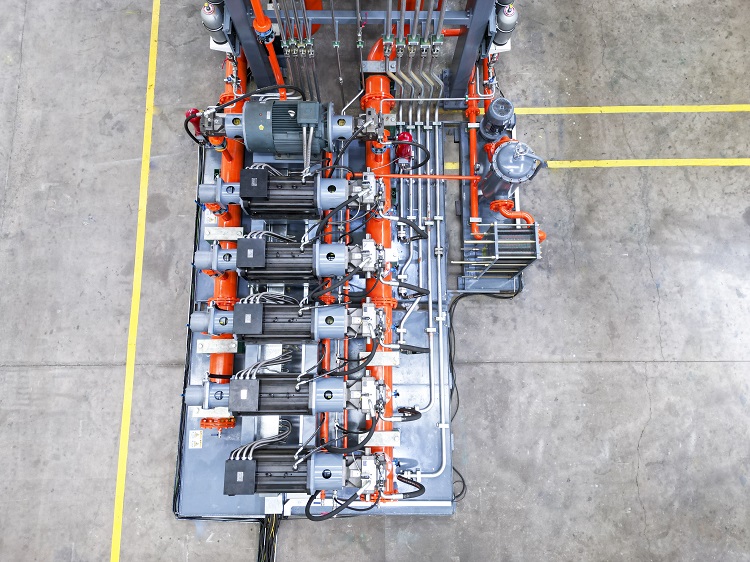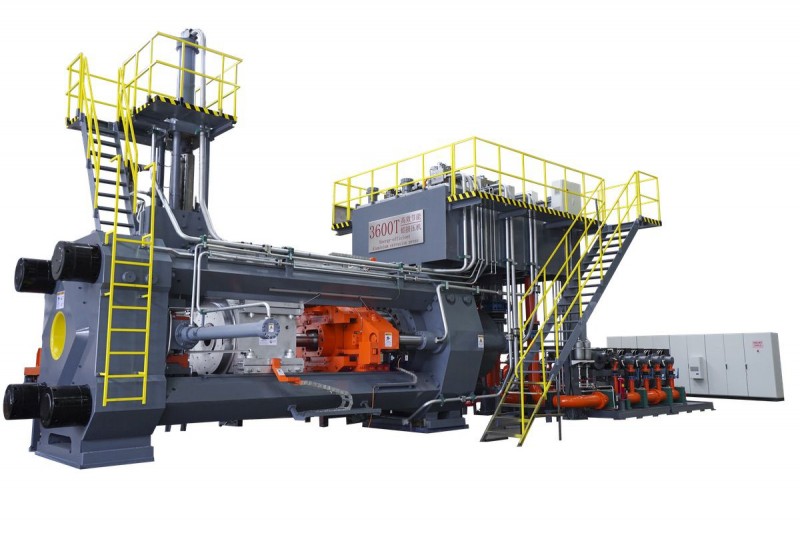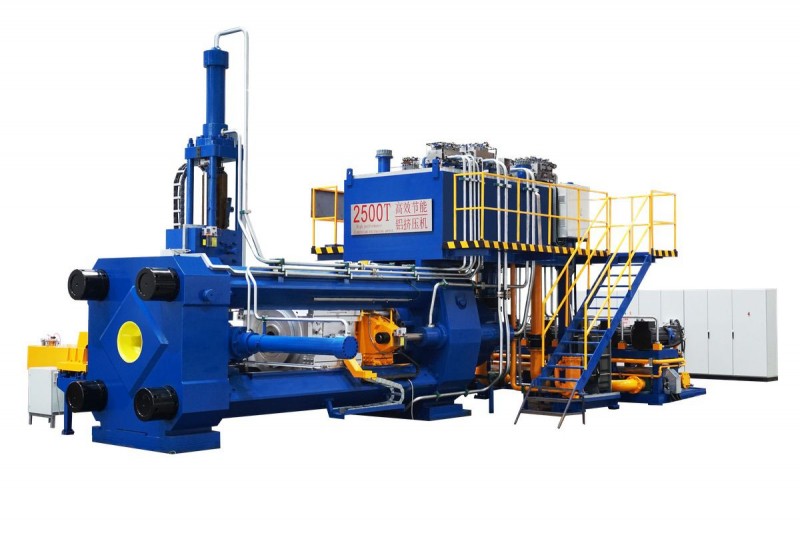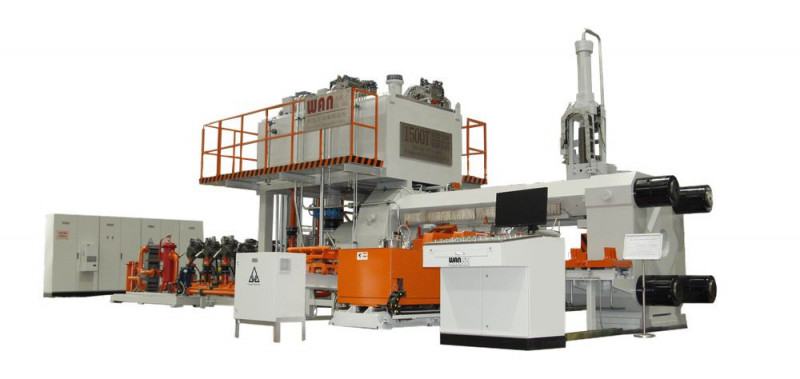The aluminum extrusion press is integral to achieving the various extrusion forms and models clients need in varying instances. It seems to work effortlessly, and it can be easy to overlook its need for maintenance and care. It is placed under extreme pressure in all its parts with every push, including the container liner subjected to a high hoop press, the rods stretched, and the stem compressed.
To extend life and obtain maximum results, it is vital to constantly check and maintain all the parts of the press while adopting preventive measures to avoid downtime and losses from damage.

The first part of effective aluminium press maintenance is understating its different components, the potential issues and resolution. The main parts for consideration are:
●Dummy blocks
●Stems
●Container
●Container liners
Dummy blocks are a fairly new invention but have become a popular and crucial aspect of most aluminium extrusion presses. They offer several advantages, including eliminating the need for an operator and all the challenges that loose dummy blocks cause, like damage to the front of the container.
The main cause of dummy block failure is the elastic limitation of the steel used in their construction and the extreme stresses they are subjected to. Other common problems are wear on the block’s periphery and the aluminium build, which can cause blistering and high drawback loads.
Maintenance of fixed dummy blocks focuses on the following areas:
1. Press Alignment
You want the ram stem and the container to be perfectly aligned. Experts recommend that misalignment should not exceed + or – 0.5mm. Any greater misalignment will significantly reduce the dummy blocks’ alignment.
2. Preheat the Dummy Block
The fixed dummy block requires preheating before you put it in service. While the extrusion process produces plenty of heat, preheating the dummy block prevents thermal shock. It increases the toughness of the block’s steel, which is necessary given the high temperatures it will be operating under.
You can preheat the dummy block in the container by leaving it there for a few hours or use a special oven. Precaution should be exercised to ensure that you don’t leave the block in a special oven for more than a few hours, as that can cause loss of temper and decarburization.
3. Lubricate the Dummy Block and Billet
Lubrication helps prevent aluminium from sticking to the dummy block. You can apply it automatically or manually, and it can be through the use of water-borne speciality lubes or the manual application of graphite compounds.
You can use graphite, or speciality lubes for the pre-cut billets, while for sheared billets, you should coat them after shearing with spray-applied speciality products or flame-generated carbon.
4. Prevent the Container Seal Face from Damaging the Dummy Block
When aluminium builds up on the surface of the container seal’s face and the mating surfaces of the die, it causes the container to shift. This shift is one of the main causes of dummy block breakage. You should keep this area free from any aluminium and in good condition. Some maintenance aspects include:
●Ensure the liner’s inside diameter is not constricted as a result of using small dies.
●Prevent the dummy block from completely going through the container’s exit end.
●Slow down the container travel before it hits the die face.
The stem (also called the ram) transfers the compressive forces to the billet from the main cylinder. This function requires the stem to perform under considerable compressive stress without breaking, upsetting, or bending.
The material and heat treatment of the step prepare it for the compressive stress and give it low ductility. The main causes of damage to the stem and how to prevent them include:
Fatigue: The stemcan experience fatigue failure, manifesting as small cracks at the stresspoints. You can prevent stem fatigue by following the below stress-reliveapproach.
●Heat the stem to 540 degrees Celsius, not exceeding 55 degrees Celsius per hour.
●Maintain the temperature for an hour for every inch of stem diameter.
●Remove the stem from the furnace and air cool it at room temperature.
Further precautions and preventive maintenance steps you can take include:
●Avoid doing any welding on the stem
●Periodically re-machine the stem to remove cracks, cuts, upsetting, or impact scars. You should then stress-relieve after every machining.
●Always have the stem dressed.
●Have a weekly check of the stem’s end for upsetting or work hardening. You can also check it every time you change the fixed dummy.
●Ensure all the stem mounting accessories, like the stem ring, are correctly mounted.
●Use a straightedge to inspect the stem’s straightness.
●Always check and maintain proper press alignment within the set limits.
●Check the stem mounting, ensuring the seat is clean. Also, ensure the pressure plate is free from damage, coining, or deflection. You can use feeler gauges and a straightedge for your inspection.
●Frequently inspect the dummy blocks and the stem for any sign of excessive wear or build-up and take corrective action.
The container is the platform holding and supporting the liner, shielding it against extrusion forces that could break it. To achieve this, the liner has to uniformly pass the stress through the container, meaning you need a proper shrink fit. The shrink fit also helps the container liner withstand the pressure. Given its prominent role, it can affect the whole extrusion process without proper maintenance. Some of the main causes of container damage include:
●Thermal shock: Like most other parts of the extrusion press, it is sensitive to heat, so any sudden heating and cooling of the container can cause stress cracks or other damage.
●Exposure to excessive heat: The container material softens and weakens when exposed to high temperatures. Should the temperatures exceed 590 degrees Celsius, the container is permanently damaged and unsuitable for further use.
●Non-uniform temperature across the container: Instances, where the container experiences uneven heat retention will leave the centre of the container experiencing higher temperatures than the rest. This effect results in the area weakening, and it may yield under the extrusion forces, causing a belly at the centre of the container. Uneven temperatures are not a problem in low temperatures, but in high temperatures, it could cause permanent distortion, necessitating permanent reboring of the container.
The best maintenance practices to prevent damage to the container include:
The function of the container liner is to counter the abrasive effects of the oxides and aluminium during the extrusion process. It can achieve high hardness even at extreme temperatures, which, unfortunately, trades for ductility. The container liner thus relies on the container to shield it against breakage.
On top of that, the container liner experiences axial loading, resulting from friction between the container and the billet. It requires a shrink fit between the liner and the container to prevent slippage of components.
The maximum shrinkage that may be used is 0.24% of the mantle’s internal diameter. Even with all these features, the container liner is still susceptible to damage if you do not spot the issues early on, which is why maintenance is necessary. The main risks of damage are:
●Lack of support: The liner needs an accurate shrink fit to benefit from the support of the container. Without this support, the liner will fail due to extrusion stresses. The damage can also come from the container getting hotter than the liner, losing the shrink fit and causing failure.
●Excess heat: Operating the aluminium extrusion at excess heat poses a risk to the liner. It makes its material soft and wears out prematurely. Low temp operations will extend life and lower costs.
●Thermal shocks: sudden cooling or heating of the container liner can result in breaking.
Some vital maintenance tips for the aluminium extrusion press include:
The heavy use, the plenty of movable parts, and the extreme forces under which the aluminium press operates all mean that some of the maintenance needs to be done daily. Some helpful tips when doing this include:
●Check all lubricating parts about two times per shift. The bearing part’s temperature should not be more than 50 degrees Celsius, and they should all have sufficient lubrication oil.
●The screw speed should start at a low speed and only increase gradually after spending a period working at a low speed.
●Before you install a mould and a new screw, check to see if the surfaces of each mating contact are clean. Also, coat each fastening bolt with silicone oil or molybdenum disulfide to disassemble the parts at higher temperatures easily.
While most defects and faults can be fixed with a little maintenance, the aluminium extrusion press may work efficiently, be productive, and be safer with some retrofit upgrades. For example, newer digital controls offer better control and accuracy, preventing impact damages. They also help extend the life of the press, and equally important, they reduce the maintenance demands.
Maintenance is integral in keeping the extrusion press operating and reducing loss through damage and downtime. The aluminium extrusion press has several movable parts and is always under extreme pressure from the extrusion process.
The temperatures are also extremely high, meaning the whole system is under constant pressure and often strained to the maximum. Maintenance helps stress relieve the components, prevent damage, and detect issues before they escalate to major problems.
Top maintenance issues revolve around ensuring most parts are pre-heated, detecting cracks, and proper lubrication. For further help with aluminium extrusion press issues, you can contact us at Foshan Nanhai Wangeshi Machinery Equipment Co., Ltd, and we will be happy to guide you through various options.


